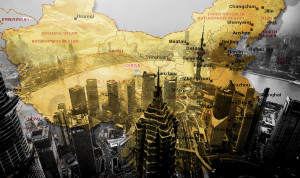
Actually, the Chinese experts point out that, despite the 30-year period of continuous economic progress, in terms of technological development and welfare their country is still far from the state that would allow it to become a leader in global political and economic processes. This is rather commendable (and worthy of emulation) self-restraint and sobriety given the background of very real achievements.
Although, of course, in the appeals to not have eyes pop from far-fetched fears directed primarily towards the public of the main geopolitical opponent, the United States, we cannot exclude the presence of certain “political guile.” But who, of the current leading world players, has not displayed it and in not “certain” doses at that?
To claim the status of the all-round (not only economic, but also socio-cultural) world leader, China would need a decade (maybe even more than one), of at least relative “external silence” to focus its efforts on further economic development. These plans, of course, cannot include the “premature” provocation of fears of their geopolitical opponents. That would inevitably lead to the aggravation of the foreign policy situation, and, consequently, the need to divert resources to accelerate the development of military capabilities.
Of considerable importance is the question of the applicability to China’s behavior in the international arena of postulates of various types of contemporary variations on the theme of Otto von Bismarck’s “realpolitik”, which are the product of European culture and European (dating back to Thucydides) views on the driving forces of historical process.
For understandable reasons, the question of Chinese “specificity” (and whether it exists at all) in the field of international politics today is the main focus of attention of foreign Sinologists.
Amongst supporters of such “specificity” is the idea that the European “heavy handedness”, which clearly manifested itself during the colonial wars of the 19th century – including (and perhaps especially) within China itself – is not really characteristic of the course of action of historic China. According to this point of view, China has always sought to avoid a situation where it becomes necessary to resort to violence against neighbor-vassals. Communication with them was carefully developed so that the “satellites” could see real benefits from the established format of relations with the “patron”.
Such concepts about the extent of “uniqueness” in the image of the historical behavior of China in the international arena are vulnerable to counterarguments. In particular, today in Xinjiang and Tibet, China behaves sometimes in the style of the 19th century Europeans.
In any case, the current China is a phenomenon of the changeable global “political weather”, which means (as in the case of “natural weather”) it is senseless to imbue it with any emotional evaluations in terms of “good-bad”.
Statements about China replacing Japan as the leader in the Asian phenomenon, called the “flying geese paradigm” (FGP), also do not appear to correspond to reality.
The image of FGP was born in the 1930s in the framework of the concept of “catching up” – an alternative format to the relations between European colonial powers and their colonies. According to the FGP strategy, the economic leader does not engage in exploiting his vassals “in servitude”, but rather builds mutually beneficial relationships with the less developed countries. In the course of this interaction, organizational and technological achievements of the leader of the “flock” overflow to “geese” in the first (closest to the leader) “wave”, and subsequent development of their achievements spills over to the next “wave”, etc.
Since the 1960s, the leader of the Asian-FGP was Japan. To a significant extent the rapid economic progress of the “first wave of geese” represented by South Korea, Taiwan, Hong Kong and Singapore, which for some time now have been re-designated as the “Asian Tigers of the first wave”, is due to Japan. Today, contenders for the role of “Tigers of the second wave” are a number of countries – members of ASEAN (Brunei, Indonesia, Vietnam and Malaysia).
But before we talk about China replacing Japan in the post of “goose leader”, it is useful to answer the question, whether in the past 50-60 years the “wedge formation” of the Asian flock with one “goose” in the lead has been preserved at all.
Official statistics for ASEAN trade and investment for the period 2010-2013 identifies four main trading partners of ASEAN: China, Japan, EU and USA. Their average percentage in the total foreign trade of the Association can be estimated by the following series of numbers respectively: 12.5%, 10.5%, 10%, and 8.5%. Although China is in the first position of the external trading partners of ASEAN, its lead in front of the other three is not overwhelming.
Furthermore, from the standpoint of FGP strategy, the indicators of influx of foreign investments into the economies of the following “geese” have been of much greater importance. And here the leader becomes the EU, followed by Japan, the United States and, with a considerable lag, China.
Thus, it seems that the Asian “second wave of geese” generally lost interest in flying anywhere in “wedge formation”. It is possible to be quite successful, simply remaining in place as a “friendly crowd”, and building relationships with several world economic leaders, half of which are not even in Asia. Among these leaders, China is merely “one” of many.
Vladimir Terekhov, leading researcher of the Center for Asia and the Middle East of the Russian Institute for Strategic Studies, especially for the online magazine “New Eastern Outlook”.
